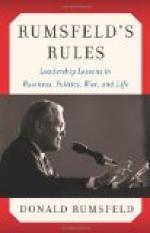Of the probabilities of success it would be rash to speak. But though numbers are against the British we must never forget the splendid qualities which British troops have displayed in the past and which, as the actions of this war have proved, are possessed by our officers and men to-day. The experiences of the last few weeks have taught them what are the formations to avoid and have shown them that they shoot at least as well as the Boers. We may, therefore, hope for victory even against numbers.
But even if Sir Redvers Buller finds positions as strong as that at Colenso, the Boers will probably be baulked of their prey, the garrison of Ladysmith. Sir George White has with him the flower of the British Army, and he does not mean to be reduced by degrees to the extremity of famine and helplessness. During Sir Redvers Buller’s attack the Ladysmith’s force will not be idle, but will attack the Boers who are investing the place. Signals must have been prearranged between the two commanders, and it can hardly be doubted that if and when Sir George White should have reason to believe that Sir Redvers Buller may be unable to force his way through the Boer positions he would himself set out to cut his way through the investing lines, and at whatever sacrifice to carry the remnant of his force into Sir Redvers Buller’s camp, and thus to vindicate the honour of the British arms and the character of the British soldier.
SUBSTANTIAL PROGRESS
January 25th, 1900
The decisive operation is proceeding slowly but surely. On Wednesday, the 10th, Lord Dundonald reached the south bank of the Tugela at Potgieter’s Drift, and on Thursday a brigade of infantry was up with him. A week later, on Wednesday, the 17th, Lyttelton’s brigade crossed by the drift, and Warren’s wing of the Army began the passage by a pontoon bridge at Trichardt’s or Wagon Drift. On Thursday, the 18th, Dundonald was on the high road west of Acton Homes, and drove away a party of Boers.
North of the Tugela there is a great crescent-shaped plateau three or four miles across at the widest part. The crescent has its convex side to the south-west. One of its horns touches the Acton Homes—Ladysmith road; its broadest part bulges south towards the river bank between Wagon Drift and the loop near Potgieter’s Drift; its other limb is broken into irregular heights, Brakfontein kopje apparently marking its south-eastern apex. On the concave north-eastern side Spion Kop is about at the centre, and is four miles north of Wagon Drift. The plateau is three or four hundred feet above the river and Spion Kop about the same height above the plateau. Near the northern apex rises the Blaauwbank River, which flows eastward towards Ladysmith along the foot of an east and west range, a spur from the Drakensberg mountains jutting out so as to separate the Van Reenen’s road and valley from the valley followed by the Acton Homes—Ladysmith road.




